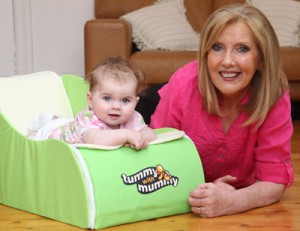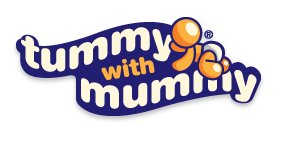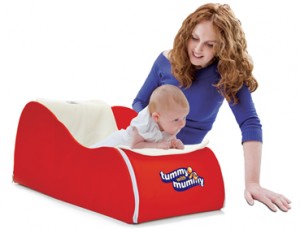
Promote Infant Development and Active Babies Through Movement!
Recognizing that early movement builds better learners and healthy babies, two mothers, one a Pediatric Occupational therapist and the other a TV and video producer, have teamed up to get babies active with Wee Exercise, a development workout video series. Pediatric Occupational Therapist Margaret Barnes, mother of three children and TV Producer Karen LeBlanc, mother of two children, created the Wee Exercise program to show parents and caregivers how to become their child’s developmental coach with fun, easy-to-follow exercises and sensory activities.
“In today’s society, babies aren’t being stimulated enough in ways that encourage active movement, explains Barnes, who practices Pediatric Occupational Therapy in Houma, Louisiana. “Early movement and simulation get neurons firing in the brain laying the foundation for higher learning. It also sets the stage early for a lifelong commitment to an active, healthy lifestyle, especially important in light of rising rates of obesity in children today,” says Barnes.
Wee Exercise is a four-part videotape series that shows parents creative developmental activities working with simple household items such as rolled up beach towels and laundry baskets. Each of the four half-hour segments is devoted to a specific developmental stage in baby’s first year of life, focusing on different abilities such as developing head control, tummy strength, balance and coordination, and fine and gross motor skills.
“This is not exercise in the traditional sense of the word- baby aerobics or mommy yoga. Wee Exercise brings parents back to the fundamentals of spending more time interacting with their infants in a sensory rich environment that fosters physical development, “ says LeBlanc.
Wee Exercise promotes guidelines released by the National Association for Sport and Physical Education recognizing the need for early movement and stimulation so that infants will learn and move more skillfully. NASPE’s Active Start Committee released a report warning parents that confining their children in strollers, car seats, play pens, for hours on end could delay physical and cognitive development.
The Wee Exercise line of products includes the video and DVD series, Smart Sense Mat, Tummy Time Roll, Gift Basket and Exercise Ball.
WEE EXERCISE VIDEO & DVD

Wee Exercise Videos and DVD was inspired by the lack of activity and sensory stimulation among infants in a culture obsessed with test scores and academic achievement. Oftentimes sensory-motor development is overlooked. Infant stimulation is the buzzword of modern parenting but parents interpret this intelligent nurturing as academic rather than physical stimulation. The emphasis is on cognitive development as parents strive to create intelligent infants with academic toys and activities such as flash cards, books and videos that focus on learning a foreign language, early reading and mathematical concepts.
As mothers we went looking in the marketplace for products that helped us provide that sensory-motor stimulation and constructive opportunities for early movement and we found nothing. We created the Wee Exercise video series to give parents and caregivers a tool and basic education on how to get baby moving for fine and gross motor skills and sensory stimulation. The exercises and activities are based on many of the same movements taught in Pediatric Occupational Therapy but are mainstreamed for the general population in a user friendly fun manner.
The Wee Exercise video and DVD series focuses on each developmental stage in baby’s first year using simple household items such as balls, hula hoops and laundry baskets. The exercises work on different areas and abilities such as developing head control, tummy strength, balance and coordination, and fine and gross motor skills.

Encouraged by a report from the National Association for Sport and Physical Education, which concluded that babies need exercise in order to learn and move more skillfully, LeBlanc and Barnes began a grass roots mission to get babies active with their video series. Wee Exercise shares NASPE’s goal of promoting healthy, active babies.
The Wee Exercise DVD is a four part series featuring fun, easy to follow exercises working with simple household items such as rolled up beach towels and laundry baskets. Each of the four half-hour segments is devoted to a developmental stage- 0 to 3 months, 3 to 6 months, 6 to 9 months, and 9 to 12 months. Each stage focuses on different areas and abilities with specific goals such as developing head control, tummy strength, balance and coordination, and fine and gross motor skills. Click here to see a promo of this DVD.
THE SMART SENSE MAT FOR SENSORY AND TUMMY TIME FUN

The Smart Sense Mat was inspired by the prevalent need among infants for integration of the senses. Sensory Integration is the ability of a child to organize all the feedback received from the five senses that at the beginning of life synaptically fire from different spots. Research shows that sensory integration improves a child’s ability to concentrate, learn, think abstractly as well as develop his or her motor skills and self esteem.
In an effort to maximize the doctor recommended daily dose of tummy time, Barnes and LeBlanc developed the Smart Sense Mat which can be used along with the Wee Exercise Tummy Time roll.
Babies can now build sensory smarts on the belly with a new tummy time mat designed for touchy, feely fun and sensory integration. Wee Exercise, an infant development products company, has created a new multi-texture playmate that rolls tummy time and sensory stimulation into one developmental play toy. In just 15 minutes a day, parents can foster a happier, healthier, smarter baby with tummy time and sensory stimulation.
In an effort to maximize the doctor recommended daily dose of tummy time, Barnes and LeBlanc developed the Smart Sense Mat which can be used along with the Wee Exercise Tummy Time roll. For babies who prefer tummy time while propped up rather than flat on their stomachs, the Smart Sense Mat has an attached sleeve on the mat that holds the Tummy Time roll. The mat has seven different textured panels and brightly colored pull-tabs to keep baby entertained and engage the senses while on the tummy.
“We encourage caregivers to use the Smart Sense Mat to interact with baby by naming the various sensations of the touch panels to help baby identify and organize tactile information,” says Barnes. The Smart Sense Mat is the newest addition to the Wee Exercise product line, which promotes motor skills through fun developmental exercises and activities.
The Smart Sense Mat can enrich infant stimulation as another fun developmental toy that promotes active, engaged babies and ultimately better learners in childhood.
THE WEE EXERCISE TUMMY TIME ROLL

The Wee Exercise Tummy Time Roll was designed to get babies comfortable on their tummies. In an effort to maximize the doctor recommended daily dose of tummy time, Barnes and LeBlanc developed the Wee Exercise Tummy Time roll to allow baby to prop himself up while on the tummy making the entire experience more enjoyable. The Tummy Time Roll also is used in several development exercises seen on the Wee Exercise Videos and DVD. The Tummy Time roll can be used with the Smart Sense Mat, which has an attached sleeve to hold the roll in place while baby is enjoying tummy time and sensory fun with the mat’s textured panels.
The Wee Exercise Tummy Time Roll was created to build upper body strength and prop up baby so that he can lift his head and engage in his environment while on his tummy instead of lying flat facing the floor. The tummy roll also helps baby learn to shift his body weight and develops hand strength. This 5x5x20 firm pillow rolls comes with the Wee Exercise embroidered logo.

To purchase the Wee Exercise Range of Products please visit www.weeexercise.com
Alternatively you can call: 985-580-1749 to order by phone
Please note:
Wee Exercise will ship worldwide. Please send an e-mail to karen@weeexercise.com for a shipping quote so that we can send you a customized invoice to pay online for your international order.
Contact details:
Margaret Barnes 985-580-1749
Karen LeBlanc 407-733-4400.
Wee Exercise is open to new distributorships abroad. Anyone interested, can contact Karen.
Success Through Play™ Comments:
Pediatric Occupational Therapist Margaret Barnes and TV Producer Karen LeBlanc have developed an award winning series of products. The Wee Exercise DVD will teach parents how to stimulate their baby during the first year of life, both on a sensory and motor level. The NEW Smart Sense Mat is the most extraordinary tummy time mat on the market and believe me, I have searched the globe. The mat offers baby the opportunity to experience a variety of textures, providing him with tactile stimulation during his Tummy Time. The Back to Sleep Campaign was extremely successful in the reducing the number of SIDS cases, however, it has had an unintended side effect: many parents now never put their babies on their tummy to play. The American Academy of Pediatrics recommends that infants sleep on their backs. The keywords here are “BACK TO SLEEP” and “TUMMY AWAKE”, meaning place baby on his back to sleep but during his awake hours, ensure that he gets plenty of supervised Tummy Time. Ensuring that baby spends minimal time in a container (stroller, swing, bouncer etc), plus the addition of supervised Tummy Time on the Smart Sense Mat when baby is AWAKE will reduce a baby’s chances of developing plagiocephaly, which is clearly on the rise. In addition, regular supervised Tummy Time will help baby to develop strength and muscle coordination and will enhance his motor development. When baby is lying on his tummy and begins to push up on his hands, this weight bearing activity helps to develop the arches of his hand, which is very important for handwriting. Tummy Time allows baby an opportunity to practice skills that are precursors to crawling, such as reaching, pivoting and scooting. The Tummy Time Roll is a fantastic tool that helps baby lift his head and to weight bear on his arms, by providing him with upper trunk support. Congratulations Wee Exercise on developing a fabulous range of products, that are developmentally sound.
 System. This innovative system was specifically designed with both the parents and the baby in mind. Parents would often complain how uncomfortable they were crouching down on the floor when baby was participating in tummy time. The Tummy with Mummy System is one of the few Tummy Time Seats on the market which raises baby off the ground during Tummy Time, allowing parents to assume a more comfortable posture while engaging with baby. In addition to Tummy Time, the Tummy Time system can change and adapt effortlessly thanks to the clever zipper system to function as a recliner and an upright seat,taking the place of several other baby products and saving you precious space.
System. This innovative system was specifically designed with both the parents and the baby in mind. Parents would often complain how uncomfortable they were crouching down on the floor when baby was participating in tummy time. The Tummy with Mummy System is one of the few Tummy Time Seats on the market which raises baby off the ground during Tummy Time, allowing parents to assume a more comfortable posture while engaging with baby. In addition to Tummy Time, the Tummy Time system can change and adapt effortlessly thanks to the clever zipper system to function as a recliner and an upright seat,taking the place of several other baby products and saving you precious space.






